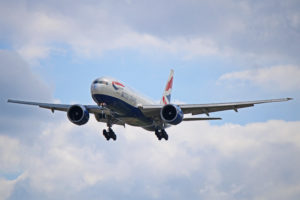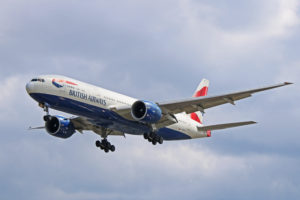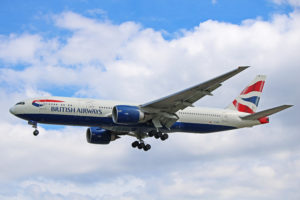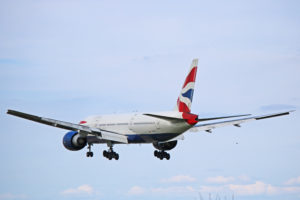 Back in 2003, G-VIIA had a scary incident that could have turned out much worse. A 24 square foot access door became detached from the Boeing 777-200ER shortly after takeoff. The result was damage to cabin windows and the fuselage, along with some near misses on the ground. More on this incident below.
Back in 2003, G-VIIA had a scary incident that could have turned out much worse. A 24 square foot access door became detached from the Boeing 777-200ER shortly after takeoff. The result was damage to cabin windows and the fuselage, along with some near misses on the ground. More on this incident below.
We photographed G-VIIA on may 20, 2018 while plane spotting at Toronto Pearson International Airport (YYZ). For full-size, high resolution versions for any of the photos in the image gallery, simply click on the individual pictures. See below for more detailed information on G-VIIA, the Boeing 777-200ER model in general and the airline.
Image Gallery
G-VIIA
Boeing 777-200ER
British Airways
Resources
G-VIIA British Airways Boeing 777-200ER Image Gallery
G-VIIA
G-VIIA performed its maiden flight on October 4, 1996 and was delivered to British Airways on July 3, 1997. The Boeing 777-236ER is configured for a maximum total of 226 passengers with 14 first class seats, 48 more in business class, 40 in premium economy and 124 economy class seats. This is one of 43 Boeing 777-200ER aircraft currently in the main British Airways fleet.
As for the flying door, the incident occurred on June 26, 2003 when G-VIIA was flying from London Gatwick to St. Johns, Antigua. A 6′ x 4′ access door became detached shortly after takeoff. Two cabin windows were damaged with fragments penetrating into the cabin. Damage to the fuselage and fin was also sustained. On the ground, large pieces of the door fell near people but there were no injuries. The occurrence is contributed to only one of the 13 door catches being fastened.
On a flight from London Heathrow to Delhi, India on September 4, 2015, fumes in the cabin were reported when the airliner was about 120 miles east of Frankfurt, Germany. G-VIIA was diverted to Frankfurt as a precaution. After eight hours on the ground, the airplane returned to London eleven hours after its original departure.
On October 14, 2015, while flying from London Heathrow to Delhi, India, the Boeing 777-200ER was invaded by flying objects. More specifically, the aircraft collided with a flock of birds. The radome was damaged but the aircraft was able to land safely. G-VIIA was on the ground in Delhi for over a day, returning to London with a delay of 28 hours.
Boeing 777-200ER
The ‘extended range’ version of the Boeing 777-200, the Boeing 777-200ER has a flight range of 13,080 kilometres. This is 3,400 KM more than the base -200 but nearly 3,000 KM less than the Boeing 777-200LR version.
The aircraft is 64 metres or 209 feet in length with a wingspan of 61 metres or 200 feet. At the tail, the airplane stands 19 metres or 61 feet in height. This variant was first introduced in 1997 with British Airways as the launch customer.
British Airways
British Airways was created in 1974 with the merging of four airlines: British Overseas Airways, British European Airways, Cambrian Airways and Northeast Airlines. In 2011, British Airways merged with Iberia. The airline is headquartered in Waterside, Harmondsworth, England and is a founding member of the Oneworld Alliance.
The airline has nearly 275 aircraft flying to over 180 destinations around the world. Leading the fleet are 12 Airbus A380-800 aircraft and over 30 Boeing 747-400 models. The most numerous in the fleet is currently the Airbus A320-200.
Resources
V.C. Bird International Airport (Antigua)




